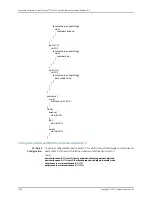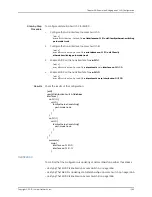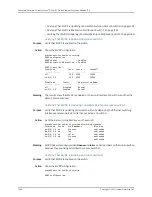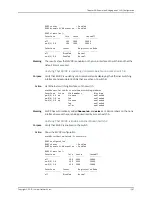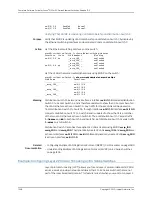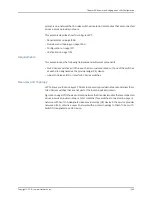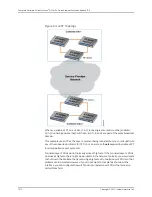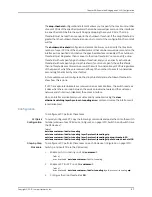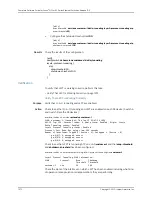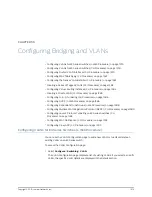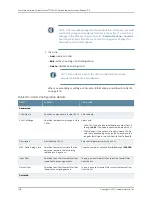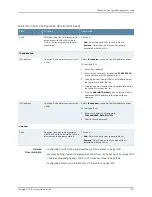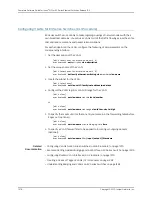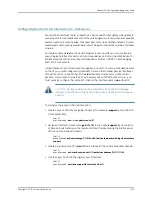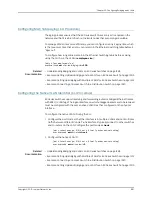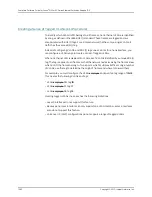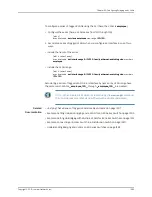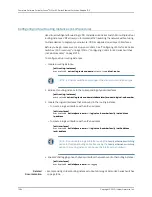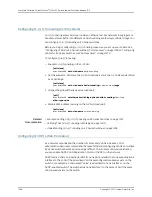
The
drop-theshold
configuration statement allows you to specify the maximum number
of Layer 2 PDUs of the specified protocol that can be received per second on the interfaces
in a specified VLAN before the switch begins dropping the Layer 2 PDUs. The drop
threshold must be less than or equal to the shutdown threshold. If the drop threshold is
greater than the shutdown threshold and you try to commit the configuration, the commit
will fail.
The
shutdown-threshold
configuration statement allows you to specify the maximum
number of Layer 2 PDUs of the specified protocol that can be received per second on the
interfaces in a specified VLAN before the specified interface is disabled. The shutdown
threshold must be greater than or equal to the drop threshold. You can specify a drop
threshold without specifying a shutdown threshold, and you can specify a shutdown
threshold without specifying a drop threshold. If you do not specify these thresholds,
then no thresholds are enforced. As a result, the switch tunnels all Layer 2 PDUs regardless
of the speed at which they are received, although the number of packets tunneled per
second might be limited by other factors.
In this example, we will configure both a drop threshold and a shutdown threshold to
show how this is done.
If L2PT-encapsulated packets are received on an access interface, the switch reacts as
it does when there is a loop between the service provider network and the customer
network and shuts down (disables) the access interface.
Once an interface is disabled, you must explicitly reenable it using the
clear
ethernet-switching layer2-protocol-tunneling error
command or else the interface will
remain disabled.
Configuration
To configure L2PT, perform these tasks:
CLI Quick
Configuration
To quickly configure L2PT, copy the following commands and paste them into the switch
terminal window of each PE device (in Figure 34 on page 1370, Switch A and Switch D are
the PE devices):
[edit]
set vlans customer-1 dot1q-tunneling
set vlans customer-1 dot1q-tunneling layer2-protocol-tunneling stp
set vlans customer-1 dot1q-tunneling layer2-protocol-tunneling stp drop-threshold 50
set vlans customer-1 dot1q-tunneling layer2-protocol-tunneling stp shutdown-threshold 100
Step-by-Step
Procedure
To configure L2PT, perform these tasks on each PE device (in Figure 34 on page 1370,
Switch A and Switch D are the PE devices):
1.
Enable Q-in-Q tunneling on VLAN
customer-1
:
[edit]
user@switch#
set vlans customer-1
dot1q-tunneling
2.
Enable L2PT for STP on VLAN
customer-1
:
[edit]
user@switch#
set vlans customer-1 dot1q-tunneling
layer2-protocol-tunneling
stp
3.
Configure the drop threshold as
50
:
1371
Copyright © 2010, Juniper Networks, Inc.
Chapter 58: Examples: Bridging and VLAN Configuration
Summary of Contents for JUNOS OS 10.3 - SOFTWARE
Page 325: ...CHAPTER 17 Operational Mode Commands for System Setup 229 Copyright 2010 Juniper Networks Inc ...
Page 1323: ...CHAPTER 56 Operational Mode Commands for Interfaces 1227 Copyright 2010 Juniper Networks Inc ...
Page 2841: ...CHAPTER 86 Operational Commands for 802 1X 2745 Copyright 2010 Juniper Networks Inc ...
Page 3367: ...CHAPTER 113 Operational Mode Commands for CoS 3271 Copyright 2010 Juniper Networks Inc ...
Page 3435: ...CHAPTER 120 Operational Mode Commands for PoE 3339 Copyright 2010 Juniper Networks Inc ...
Page 3529: ...CHAPTER 126 Operational Mode Commands for MPLS 3433 Copyright 2010 Juniper Networks Inc ...








